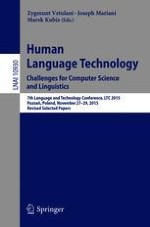
2018 | OriginalPaper | Chapter
Intelligent Speech Features Mining for Robust Synthesis System Evaluation
Authors : Moses E. Ekpenyong, Udoinyang G. Inyang, Victor E. Ekong
Published in: Human Language Technology. Challenges for Computer Science and Linguistics
Publisher: Springer International Publishing
Activate our intelligent search to find suitable subject content or patents.
Select sections of text to find matching patents with Artificial Intelligence. powered by
Select sections of text to find additional relevant content using AI-assisted search. powered by